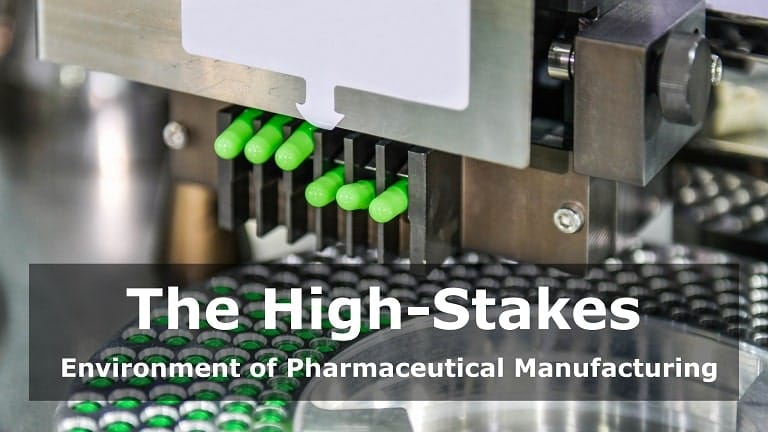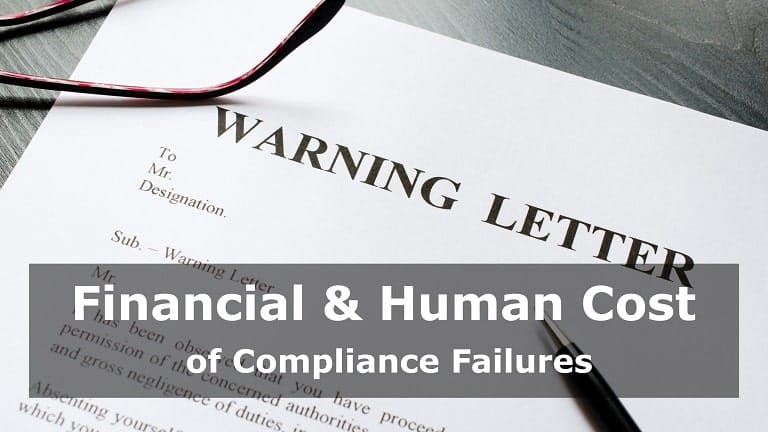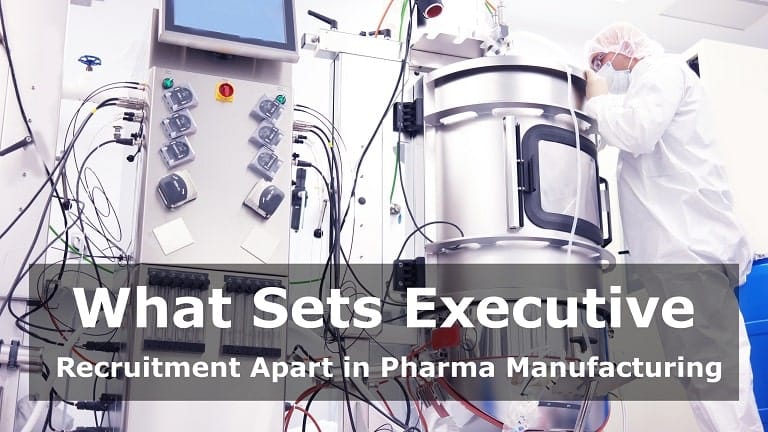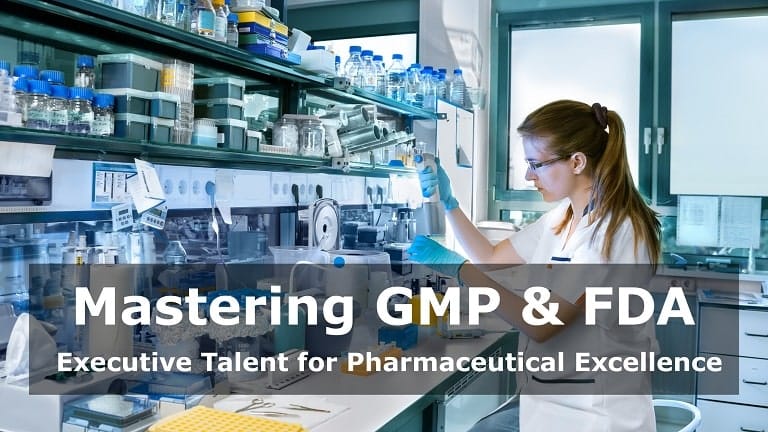In the high-stakes world of pharmaceutical manufacturing, compliance isn’t a mere checkbox—it’s the foundation upon which patient safety, product quality, and corporate reputation are built. With global regulations such as the FDA’s Current Good Manufacturing Practices (cGMP) dictating every aspect of production, even a single oversight can lead to devastating consequences: multimillion-dollar fines, product recalls, facility shutdowns, and, most critically, harm to human lives.
Against this backdrop, the role of executive recruitment takes on a whole new level of significance. Hiring leaders for compliance-critical roles is no longer just an HR responsibility—it’s a strategic risk management function. From Quality Assurance Directors to Heads of Regulatory Affairs, these roles demand more than technical skill—they require proven experience in navigating regulatory landscapes, managing audits, and maintaining a culture of compliance.
This article explores why recruiting the right executives is essential in safeguarding both patients and pharmaceutical enterprises from the high costs of non-compliance.
The High-Stakes Environment of Pharmaceutical Manufacturing

Pharmaceutical manufacturing operates in one of the most heavily regulated industries in the world—and for good reason. The consequences of a lapse in compliance are not just financial; they can be fatal. Organizations must adhere to a complex web of international and national regulatory frameworks, including the U.S. Food and Drug Administration (FDA), Current Good Manufacturing Practices (cGMP), the European Medicines Agency (EMA), and International Council for Harmonisation (ICH) guidelines. These regulations are designed to ensure that every drug manufactured is safe, effective, and consistently produced to the highest quality standards.
In such a high-stakes environment, executive leadership plays a pivotal role. A single decision made by a QA Director, Head of Validation, or Regulatory Affairs executive can either uphold or jeopardize compliance. For example, overlooking a deviation in manufacturing or delaying the implementation of corrective and preventive actions (CAPA) can lead to FDA 483 observations or even warning letters. In severe cases, non-compliance can escalate to product recalls, import bans, plant shutdowns, or criminal liability.
One of the most notable examples is the 2008 case of Ranbaxy Laboratories, which faced a $500 million settlement due to data integrity violations and manufacturing deficiencies. The fallout included product recalls, reputational damage, and market exclusion. More recently, several U.S.-based firms have been penalized for failing FDA inspections due to insufficient process validation and quality oversight—failures that often point back to leadership gaps.
This underscores a harsh truth: Compliance is not just about documentation—it’s about culture, accountability, and leadership. And the leadership must be deeply embedded in the complexities of pharmaceutical regulation. Every executive hire in this space is a decision that directly impacts patient safety, business continuity, and regulatory trust.
Recruiting for such roles isn’t about filling a position—it’s about risk management. Organizations must ensure that every leader placed in a compliance-critical role brings not just domain knowledge but a proven track record of regulatory adherence and audit readiness.
The Financial & Human Cost of Compliance Failures

In pharmaceutical manufacturing, non-compliance isn’t just a procedural misstep—it can be a catastrophic failure with far-reaching consequences. When an organization falls short of Good Manufacturing Practices (GMP) or FDA regulations, the costs are staggering, both financially and humanly.
Financially, companies face multi-million dollar fines, halted production, and extensive product recalls. For instance, failing an FDA inspection can lead to a Form 483, which, if unaddressed, escalates into a warning letter, import alert, or consent decree—any of which can shut down operations indefinitely. In some high-profile cases, pharma companies have paid settlements exceeding $500 million due to data integrity issues, validation failures, or insufficient quality oversight. Add to that the cost of remediation efforts, lost revenue, legal liabilities, and investor fallout, and the stakes become undeniably high.
Yet, the human cost is far more devastating. Poor manufacturing practices can result in contaminated or ineffective medications reaching patients—potentially causing illness, injury, or even death. Beyond physical harm, compliance failures also erode public trust, impacting not just the company at fault but shaking confidence in the pharmaceutical industry as a whole. Once trust is lost, rebuilding a brand’s reputation can take years, if not decades.
This is why recruiting for compliance-critical executive roles isn’t just about hiring—it’s about safeguarding lives and mitigating risk. When placing leaders in roles such as Head of Quality, Director of Validation, or Regulatory Affairs Executive, companies must go beyond resumes and assess each candidate’s ability to proactively manage regulatory expectations and respond decisively under audit pressure. A poorly chosen executive can overlook systemic issues, mismanage FDA interactions, or delay critical CAPAs—directly leading to regulatory violations and their consequences.
In essence, the cost of compliance failure is far too great to leave recruitment to chance. Talent decisions in pharmaceutical manufacturing are strategic, compliance-driven, and risk-sensitive. Organizations that recognize this reality invest in specialized recruitment approaches—ensuring that every executive hire not only understands the regulations but is capable of upholding them under scrutiny.
What Sets Executive Recruitment Apart in Pharma Manufacturing

Executive recruitment in pharmaceutical manufacturing is not just about finding qualified leaders—it’s about identifying individuals with niche expertise, regulatory fluency, and the leadership discipline to maintain a culture of compliance. Unlike general hiring, recruitment at the executive level in pharma demands a deep understanding of both technical competencies and regulatory accountability.
For critical roles like Head of Quality Assurance, Validation Engineers, and Regulatory Affairs Directors, the requirements go far beyond industry experience. These positions hold the weight of ensuring that the organization remains compliant with FDA guidelines, current Good Manufacturing Practices (cGMP), and other international regulations. A misstep from someone in these roles can trigger audits, product holds, or even market recalls.
What sets these roles apart is the dual expectation: mastery of complex technical protocols and an unwavering adherence to regulatory and ethical standards. For instance, a Head of Quality Assurance must not only understand validation protocols and documentation requirements but also be capable of managing cross-functional teams during inspections, CAPA implementation, and regulatory audits. Similarly, a Regulatory Affairs Director must be well-versed in submission strategies, labeling requirements, and ongoing post-market surveillance obligations.
The executive recruiter’s challenge lies in vetting these capabilities effectively. This requires more than keyword-matching on resumes. Recruiters must evaluate whether a candidate has handled FDA 483s, led site readiness efforts, or played a role in remediation projects. They must also assess behavioral traits—how candidates respond to regulatory pressure, how they balance speed with compliance, and whether they have a track record of fostering a quality-first culture.
Additionally, technical fluency alone isn’t enough. Today’s pharma executives must be collaborative communicators who can align regulatory demands with operational realities—making compliance a shared organizational priority, not just a checklist activity.
In essence, pharmaceutical manufacturing recruitment demands a highly specialized approach—where every hire must meet both scientific rigor and regulatory reliability. The cost of getting it wrong is simply too high.
How Recruiters Vet for GMP & FDA Compliance Expertise
In pharmaceutical manufacturing recruitment, particularly for executive roles, the margin for error is razor-thin. Recruiters must go far beyond traditional screening methods to ensure that candidates possess the regulatory expertise, operational experience, and leadership composure required to uphold GMP and FDA compliance standards. This vetting process is both technical and behavioral—and it begins long before the interview.
The first layer of assessment focuses on a candidate’s hands-on experience with cGMP guidelines. Recruiters analyze whether the candidate has consistently operated within environments governed by strict compliance frameworks. A strong candidate should have a demonstrated track record of implementing, auditing, and improving GMP-aligned processes—not just familiarity with theoretical requirements.
Next, recruiters review the candidate’s involvement with FDA 483s and warning letters. It’s not enough to know what they are—candidates should be able to speak to specific instances where they participated in the response process or led corrective and preventive actions (CAPAs). This helps gauge their readiness to handle real-world regulatory challenges and their ability to communicate effectively with inspectors.
Further scrutiny is placed on experience with regulatory audits and inspections. Recruiters look for leadership in audit preparation, on-the-spot decision-making during inspections, and post-audit remediation. Candidates who have successfully managed inspections—whether by the FDA, EMA, or other authorities—bring invaluable credibility and foresight.
Another essential area is the candidate’s understanding of validation protocols and change control systems. Recruiters probe for detailed examples: How did the candidate oversee validation of new equipment or processes? How was change control documented, approved, and monitored for compliance? These specifics reveal the depth of operational knowledge and regulatory alignment.
Finally, top recruiters conduct behavioral interviews to assess risk-awareness, integrity, and decision-making under pressure. They ask scenario-based questions designed to uncover how a candidate reacts when faced with ethical dilemmas, conflicting priorities, or compliance risks. Reviewing past audit outcomes and documentation rigor offers one last validation point.
In this high-stakes industry, vetting for compliance expertise isn’t just thorough—it’s essential.
Building a Compliance-First Hiring Strategy
In pharmaceutical manufacturing, where a single misstep can result in regulatory penalties or endanger patient safety, building a compliance-first hiring strategy is not optional—it’s essential. Organizations must treat executive recruitment as an extension of their quality and regulatory assurance frameworks. This requires alignment across HR, compliance teams, and specialized recruiters from the very beginning.
The first step is collaboration. HR teams must work closely with compliance leaders to define the precise technical and regulatory competencies required for each role. Generic job descriptions won’t suffice in this context. Instead, recruiters must be briefed on key expectations—such as experience with FDA audits, cGMP documentation, CAPA management, and validation protocols—and trained to identify candidates with proven, verifiable credentials.
A red flag to watch out for during this process is vague or exaggerated audit experience. Candidates who cannot articulate their specific contributions during inspections or describe how they handled compliance gaps may not have the hands-on experience needed. Likewise, the absence of ownership in Corrective and Preventive Actions (CAPA) is a major warning sign, as it may indicate limited involvement in actual remediation processes—an essential skill for leadership in a regulated environment.
However, building a compliance-first hiring strategy doesn’t stop once the candidate accepts the offer. Ongoing evaluation after onboarding is equally critical. Compliance is not a one-time qualification—it’s a mindset that must be sustained throughout a leader’s tenure. Organizations should establish structured onboarding programs, ongoing training in evolving regulatory expectations, and periodic performance audits. These initiatives reinforce a culture of accountability and ensure that executives remain vigilant, proactive, and aligned with the latest quality standards.
Ultimately, successful pharmaceutical manufacturing hinges on the leadership’s ability to enforce compliance from the top down. By building a hiring strategy rooted in risk awareness, transparency, and collaboration, companies position themselves to not only meet regulatory requirements—but to lead with integrity, safety, and operational excellence.
Conclusion
The pharmaceutical industry is built on trust, precision, and unwavering adherence to regulatory standards. In this environment, executive recruitment is not simply about leadership—it’s about liability, responsibility, and risk mitigation. The wrong hire can cost lives and millions; the right one can ensure seamless audits, flawless documentation, and a culture of continuous compliance.
By implementing a compliance-first hiring strategy, collaborating across HR and regulatory functions, and rigorously vetting candidates for cGMP, validation, and audit experience, companies can protect themselves from the costly consequences of non-compliance. More importantly, they can fulfill their mission to deliver safe, effective medications to the public.
In the end, every executive hire in pharmaceutical manufacturing is a decision that echoes across quality systems, regulatory audits, and patient outcomes. It’s not just about filling a role—it’s about protecting everything that role impacts.
Executive hiring in pharma manufacturing isn’t just about finding a qualified candidate—it’s about finding the right one for regulatory alignment. That’s why partnering with experienced manufacturing executive recruiters can make all the difference in securing talent that safeguards both compliance and continuity.


